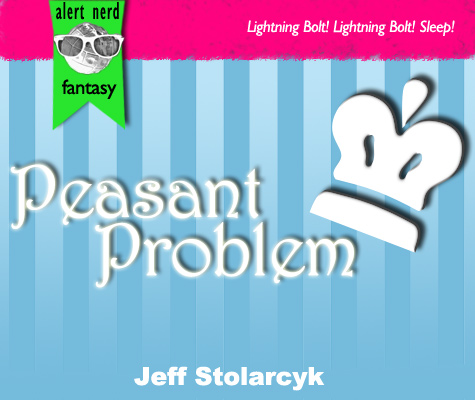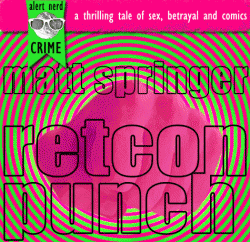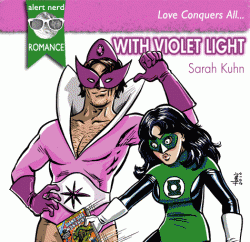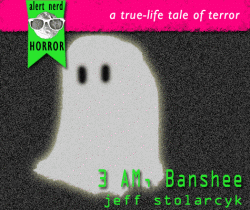Four-Color Critiques #1: Where's Huey Lewis and/or his News?
Four-Color Critiques #1: Where's Huey Lewis and/or his News?
Apr 25Chronos #1-8 is something I picked up as part of a swap, because at first I confused it with Hourman by Tom Peyer and Rags Morales, which I also want to read someday. Upon realizing what it really was, I decided I wanted to read Chronos too. I mean, time travel, late nineties hair, and a Z-list supervillain–what’s not to love, right?
John Francis Moore and Paul Guinan created this book, seemingly the product of a straight-up pitch by Moore to editor Archie Goodwin. It concerns Walker Gabriel, a time-traveling thief in the DC Universe who quickly finds himself enmeshed in a series of temporal and interpersonal controversies and paradoxes, as time travelers often do.
The initial four issues involve Gabriel’s “first” adventures in the timestream, and I say “first” with “quotes” because the book actually starts with Gabriel at age 30, then goes back to him at age 23, and the 23-year-old appears to be the “main character” of the book, even though in issue 1 we also briefly see the character as an old man and the character at some point between ages 23 and 30.
This confused me incredibly. Maybe it was because I read issue 1 late, while practically half-asleep, so I didn’t retain enough? I stopped while reading all the subsequent issues to re-skim issue 1 so that I’d understand what was happening.
So I gotta confess–I thought the entire proceedings could have been clearer. That’s the big danger of time travel stories–not just making sure everything fits together, but making sure the audience understands HOW everything fits together. It’s why the blackboard scene in Back to the Future II is one of my all-time favorites; not only does everything get explained, but it’s done in an entertaining and funny way.
That said, I still really enjoyed this first storyline, which almost seems a precursor to the modern Booster Gold series, in a sense, as well as Jeff Smith’s RASL. Gabriel winds up in Smallville circa the wild west days, and meets a sheriff named Kent, of course, etc. The art by Guinan almost seems like a kinder, gentler Tony Harris; less detail-oriented and “reality” based, more cartoony, but still weighty and dynamic. Steve Leiahola’s inks give the book an almost animated feel at times, which is nice.
The rest of the issues move into the series’ regular rhythm, delving into the mysterious past of Gabriel’s parents and their involvement with the DCU’s original Chronos, a minor-league Atom villain. That’s one piece of the puzzle Moore builds; another huge chunk is a place called Chronopolis and an organization known as the Goodfellow Troupe, which uses some funky Aztec or Mayan stone tablets to hop thru time. They pretend to be actors because everyone thinks actors are eccentric and weird all the time anyway, so no one will notice if they show up in 1642 wearing a Walkman and smoking Menthol cigarettes. Or something. I’ve still got issues 9 to 11 to read, but am waiting for a copy of the 1,000,000 issue to cross my path, since it seems like I’m missing something between 8 and 9.
Maybe it’s the fact that these types of books have always been my favorites–the ones that don’t tend to last very long, essentially–but there’s something quietly comforting about Chronos. It is a smart superhero comic book that is willing to color its characters in minor shades of grey. It has its own flavor and tone, but is not ignorant of the genre’s traditions and conventions. It’s like a really good three-camera sitcom, like Everybody Loves Raymond–there’s a reason why these formats WORK to tell stories, get laffs, churn drama, etc. As a reader, you may decide you want more than that–work that defies genre, or deconstructs it, or ignores it altogether. I like that stuff too, but sometimes, pure genre tastes really good; there’s a reason why comics have become a cultural comfort food to a tiny legion of twenty- and thirty- and forty- and fifty- and sixtysomething men.
Chronos makes me think about Blue Beetle for some reason, which makes me then think about Abhay’s recent review of Blue Beetle #1; he’s taking a look at why these things work the way they do, these constructs of tropes that seem to rise just slightly above their genre (sometimes, maybe) but most of the time are content to simmer in that genre like a finely-blended stew. I’m a little hungry right now.
For me, the more important question is this: Why do titles like this fail, so consistently and reliably? If I had time, energy, and/or math skillz, I’d sit down with the internet and pull from her guts a variety of numbers that would help bolster this concept of generic failure. You could look at numbers for Blue Beetle or Checkmate, launched off the most recent big-ass crossover; you could look at numbers for Chronos or Hourman or Young Heroes in Love, all casualties of the nineties; hell, you might even be able to make an argument that it happened to Jack Fucking Kirby and his Fourth World books back in the seventies.
One argument is probably that okay, it’s hard to launch new comic book titles, and that’s that. Period. Another one would involve noticing that there’s no Big-Name Mainstream Superheroes in these Little Titles That Could, and so no one’s buying them because they don’t have Batman, Superman, Spider-Man, or Wolverine in them.
It’s just hard to buy both of those arguments when the comic in question is actually GOOD. What you’ve got there is a situation where there are a number of people, whether it be other fans or message board posters or bloggers, saying, “Wow, this deserves to be checked out,” and others are reading/hearing that…and then doing nothing about it.
I guess these days, and maybe ALL days, the design of a shared superhero universe is not really built around the small, interesting stories taking place on the fringe; in fact, it’s not really built around delivering good stories at all. It’s a machine for delivering middling to huge EVENTS that are square in the center of everything, and if these stories happen to be worth telling, then that’s gravy.
I hate to keep harping on this shit, but I still feel like I’m the only person saying this: A second- or third-tier superhero title set in the mainstream DCU would be the PERFECT place to experiment with alternative methods of content distribution. Sell it as a download, then collect it in a trade; release it in 128-page chunks at $6.95 each; launch it as a supporting back-up in a high-profile title like Trinity or Final Crisis.
Speaking of, did anyone else catch this choice bit in a Kurt Busiek interview from a couple months ago about Trinity?
So I thought it’d be good to have a really cheap weekly book, one that had a lead story that would have lots off big, fun, important stuff happen, so readers would want to follow it regularly, but which would also have other features, promoting whatever would be on the stands the next week, or would show you advance art to a new series, a checklist of upcoming stuff — all the kind of thing that used to make me think about DC as a whole line of books, and think about reading more of it, but with more space than the one page the Daily Planet had, back when.
So what I pitched was a 12-page weekly comic for a buck, called DC Superstars, featuring a 7-page lead story with Superman, Batman and Wonder Woman, and backup stuff promoting the rest of the line. It’d be a third of a monthly book for a third of the price, so it’d be easy to just grab at the cash register and go, every week, and it’d have modern-day readers getting the kind of news and information I used to get about the whole DC line, as well. The lead stories would be big stuff — Superman discovers a third Kryptonian living on Earth, Queen Hippolyta gets resurrected, Rao gets reincarnated in human form, Batman faces a new business competitor for Wayne Enterprises that brings major super-menaces to Gotham — and there’d be lots of guest-stars, so it’d be cool stuff to read, and hopefully it’d win more readers to the rest of DC’s line, too.
Man, that’s brilliant. And if you want to support a diverse line of superhero comic books–really SUPPORT it, not just pay the idea of “support” some token lip service whilst using ad space and online bandwidth and marketing resources to continue driving up sales on a token few “event” books even as the rest of the line slowly bleeds to death–well, a weekly book like Busiek’s pitch above? That’s one way to do it. Sure would make sense to shove a book like Blue Beetle or Chronos under their eyes forcibly with the promise of OMGEVENTZZ happening in a cheap, accessible, easily available publication.
The moral of this story, I suppose: Good stuff don’t often sell, unless it also happens to promise that NOTHING WILL EVER BE THE SAME. And no one cares but me, and the rest of the internet.
(Aside: Here’s the sad story of how Chronos was “canceled.” Bummer.)












